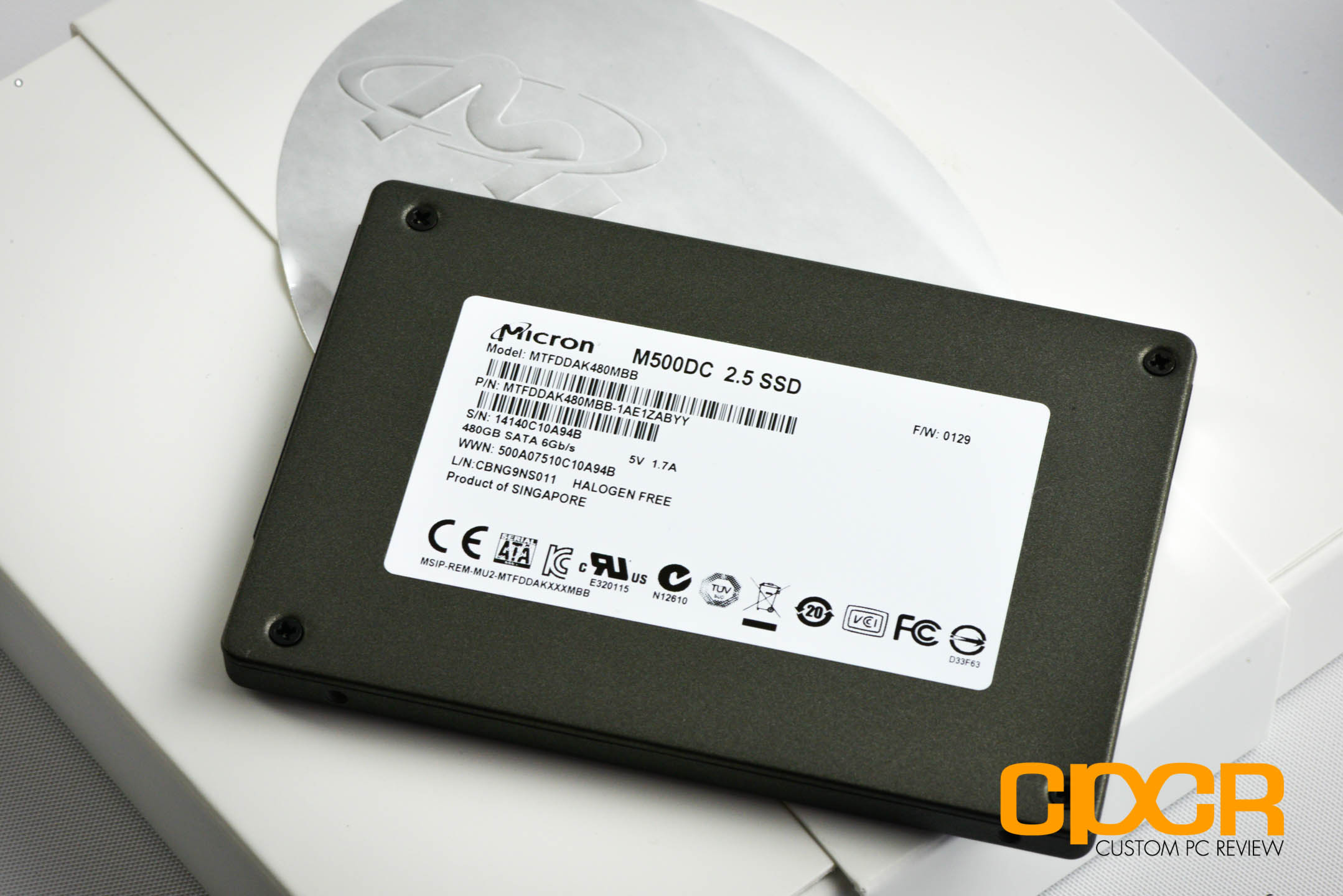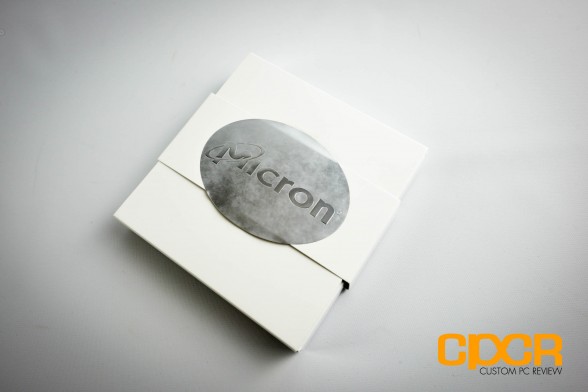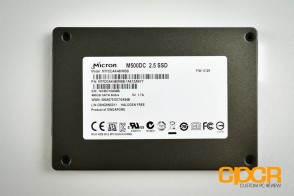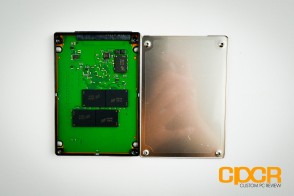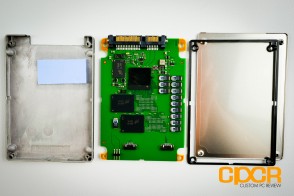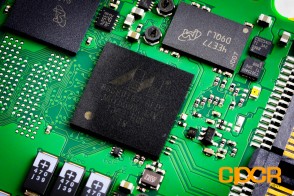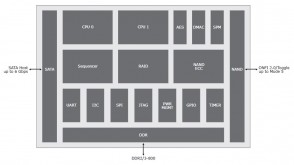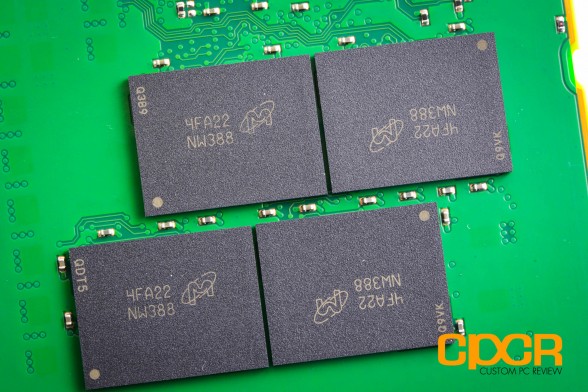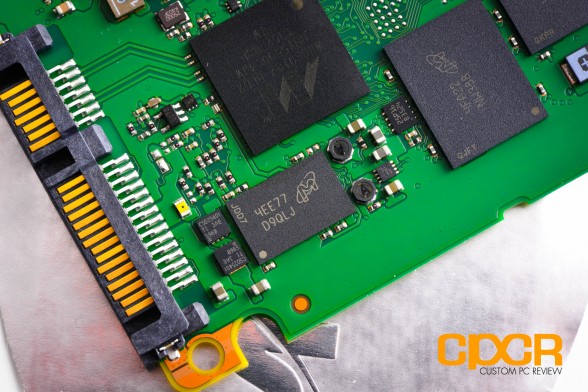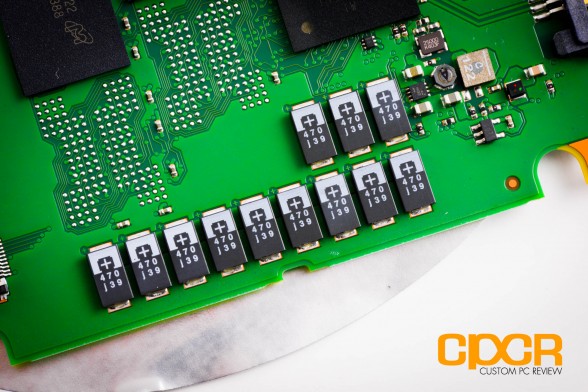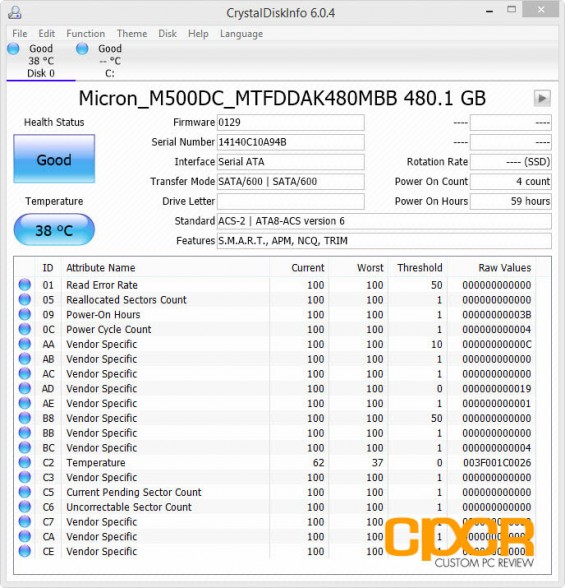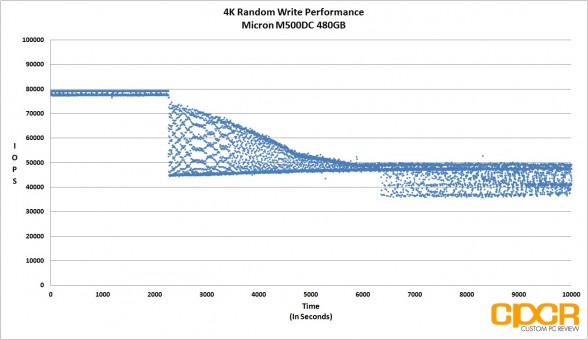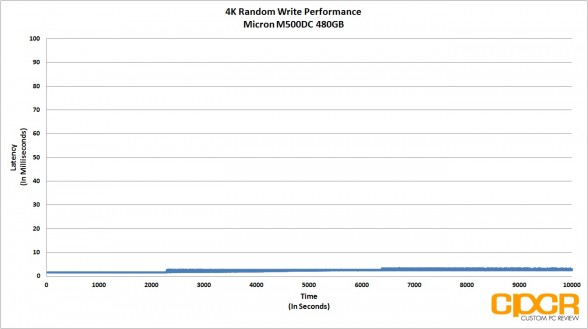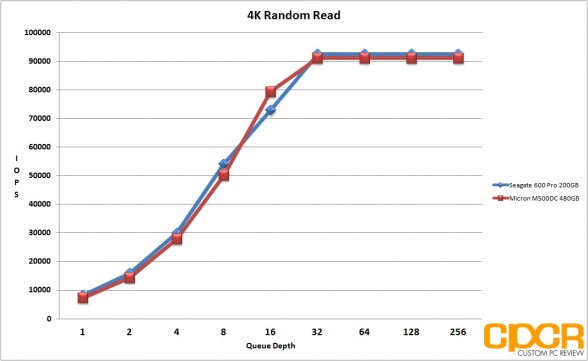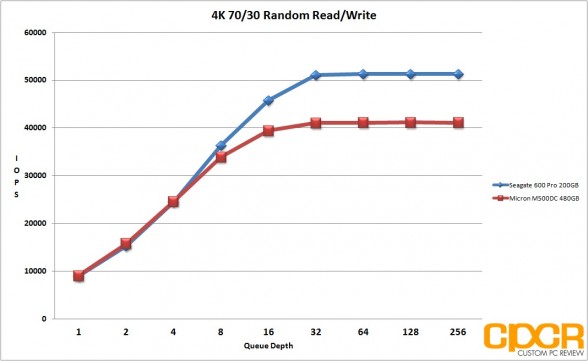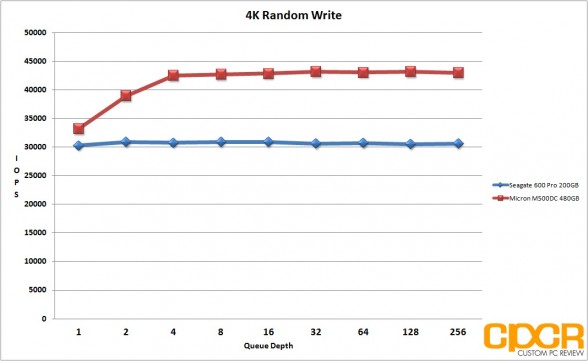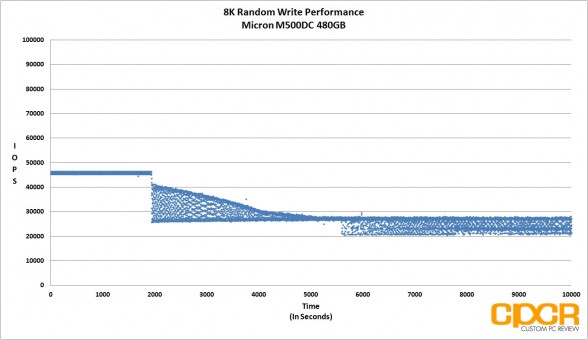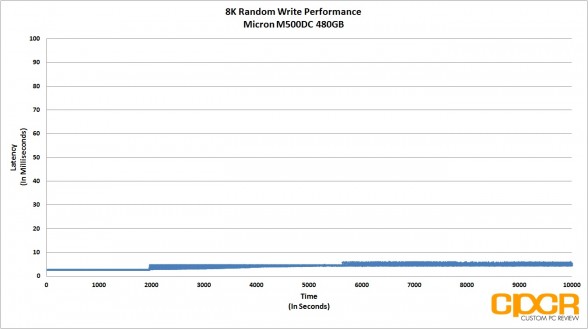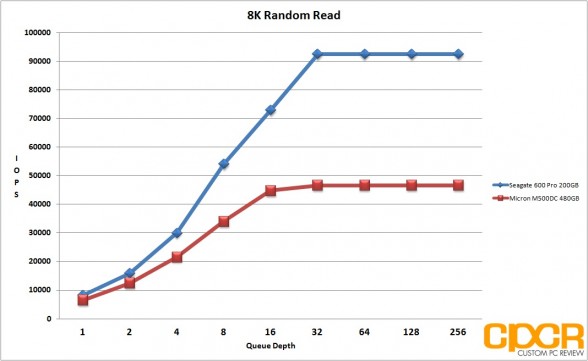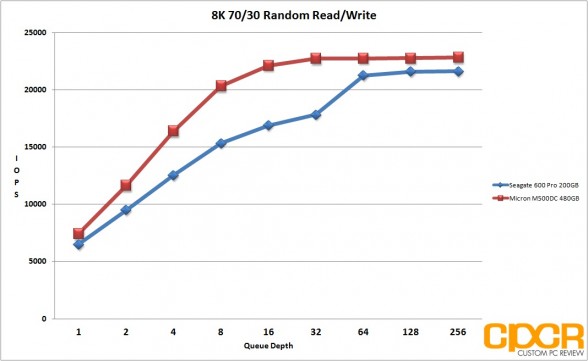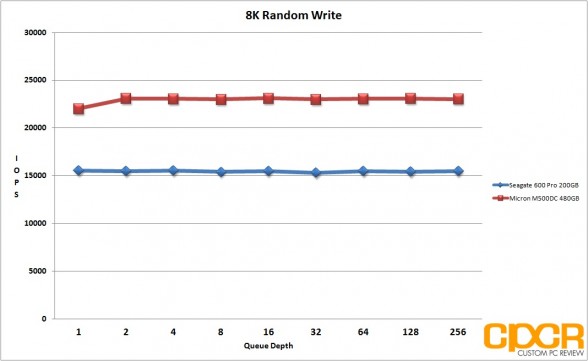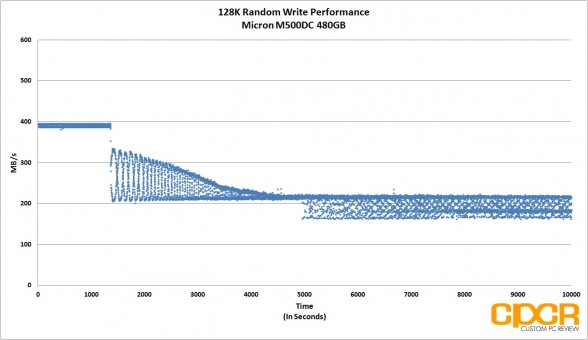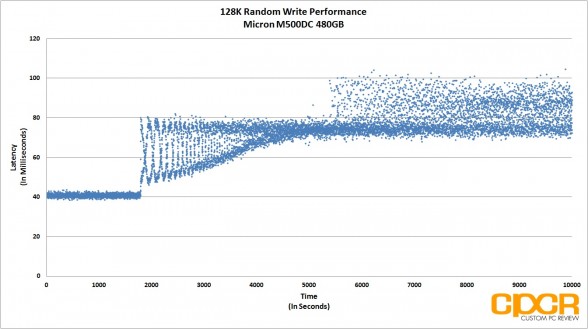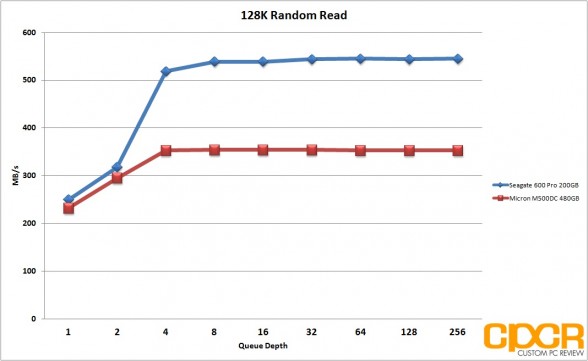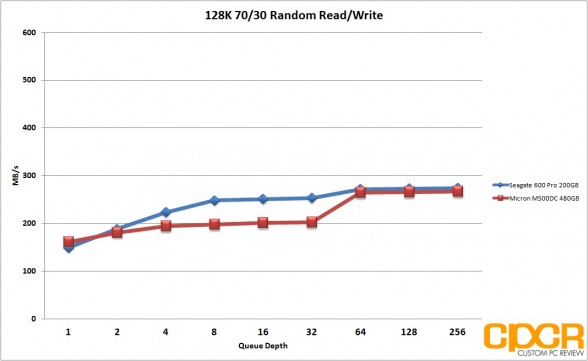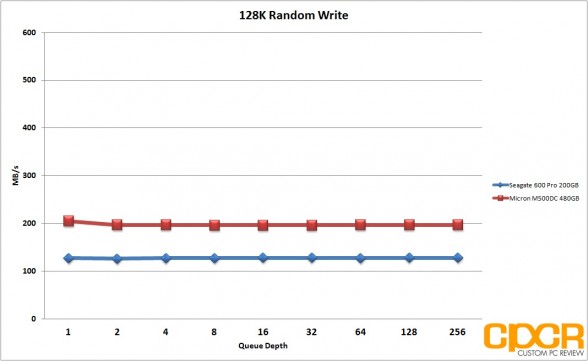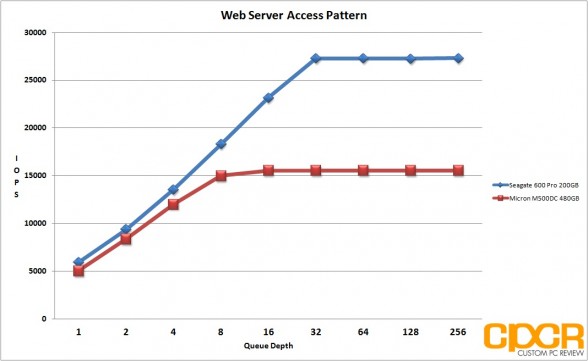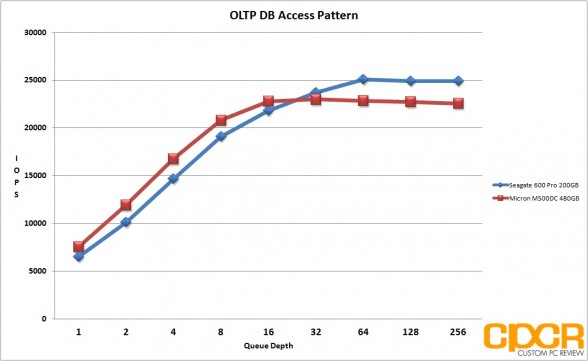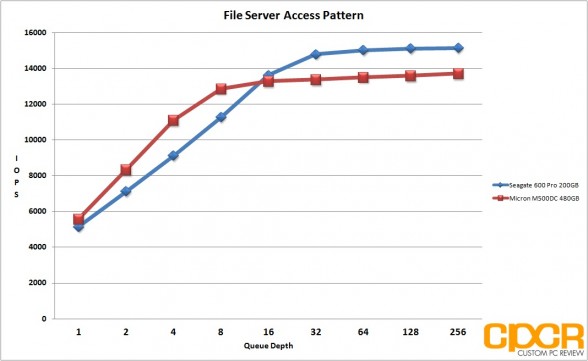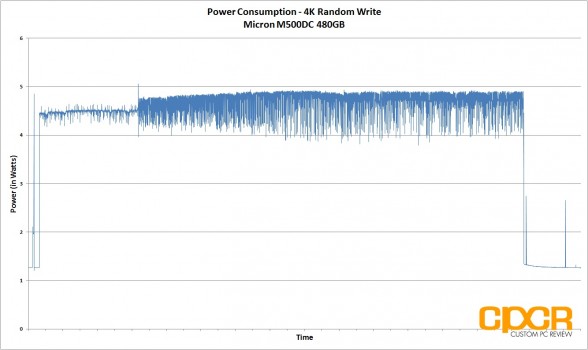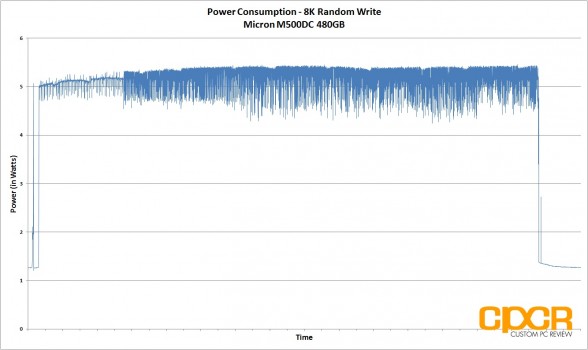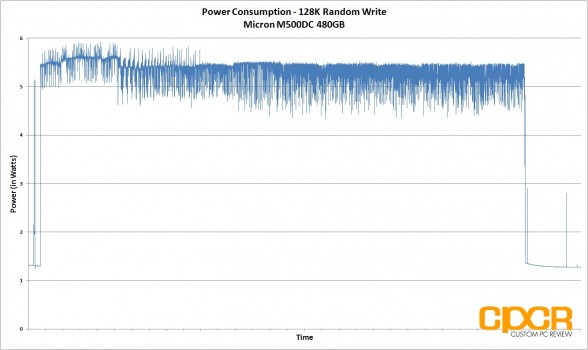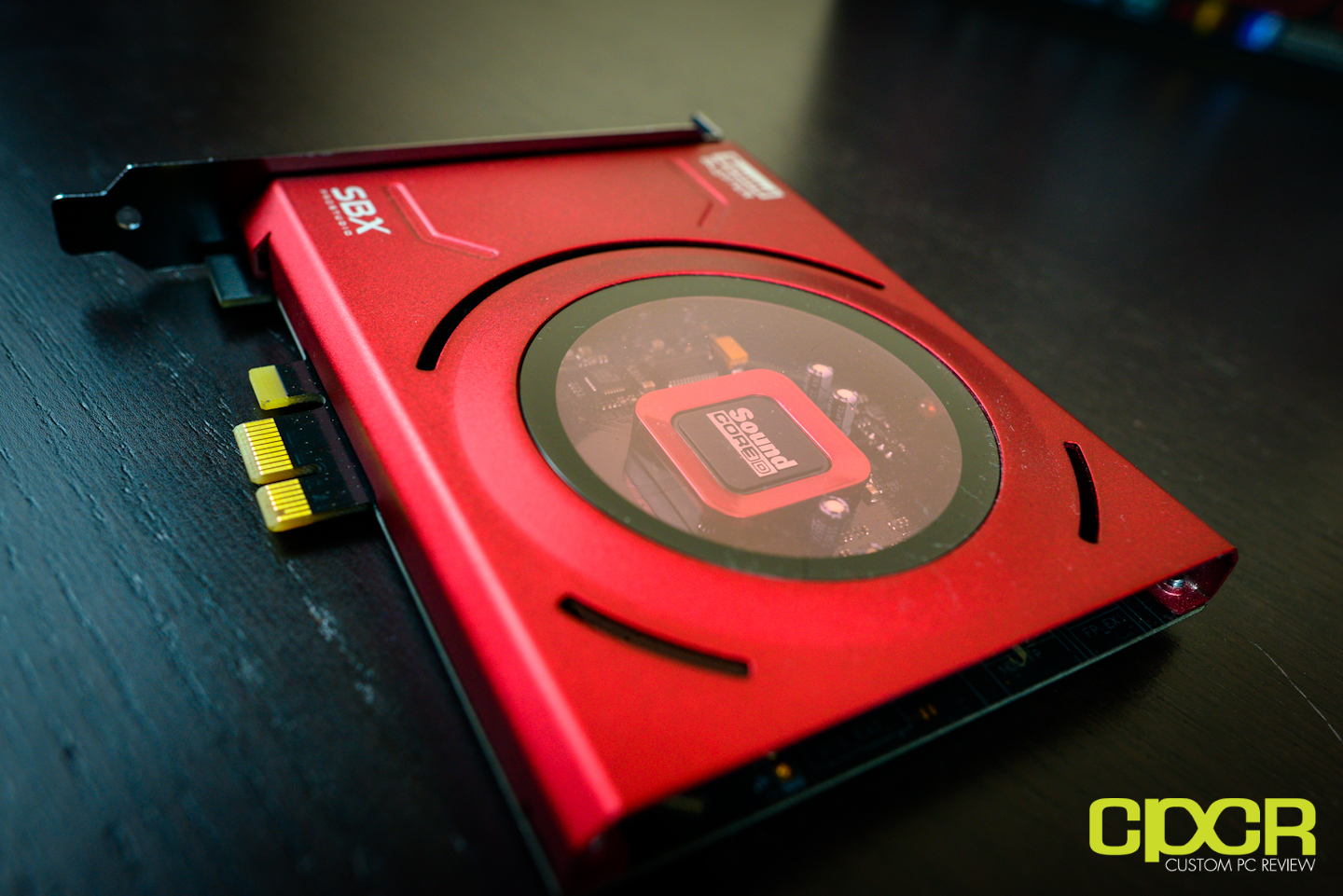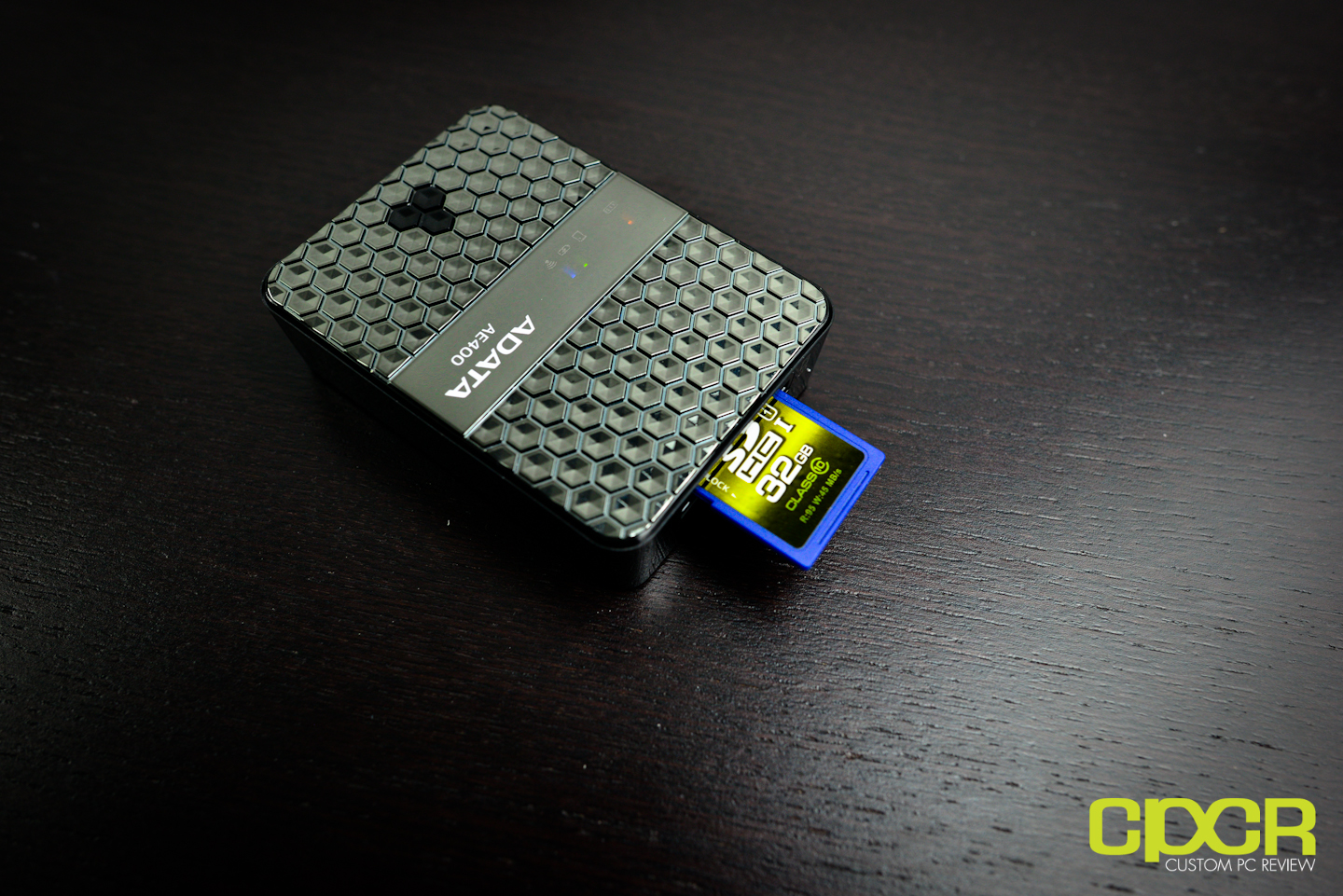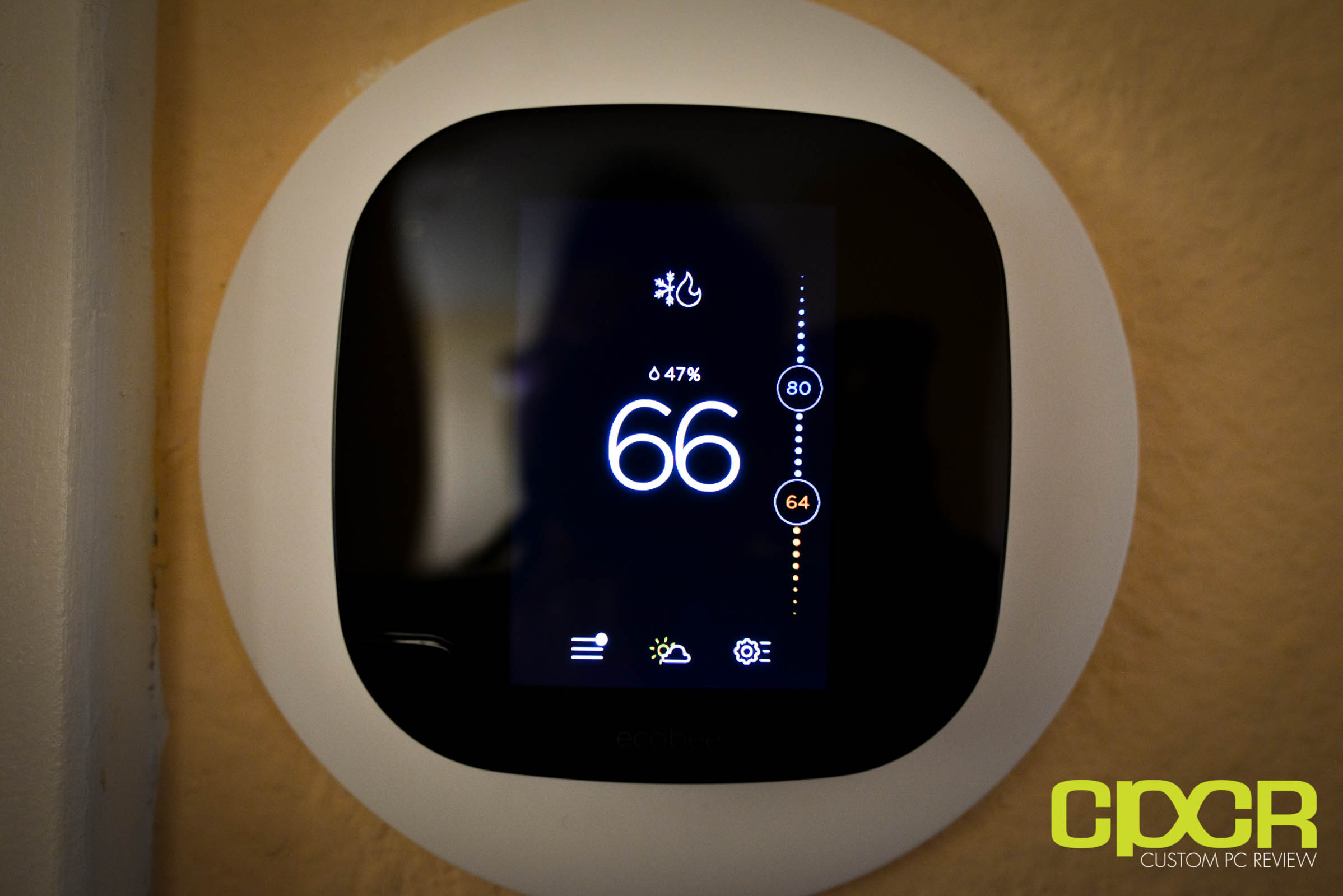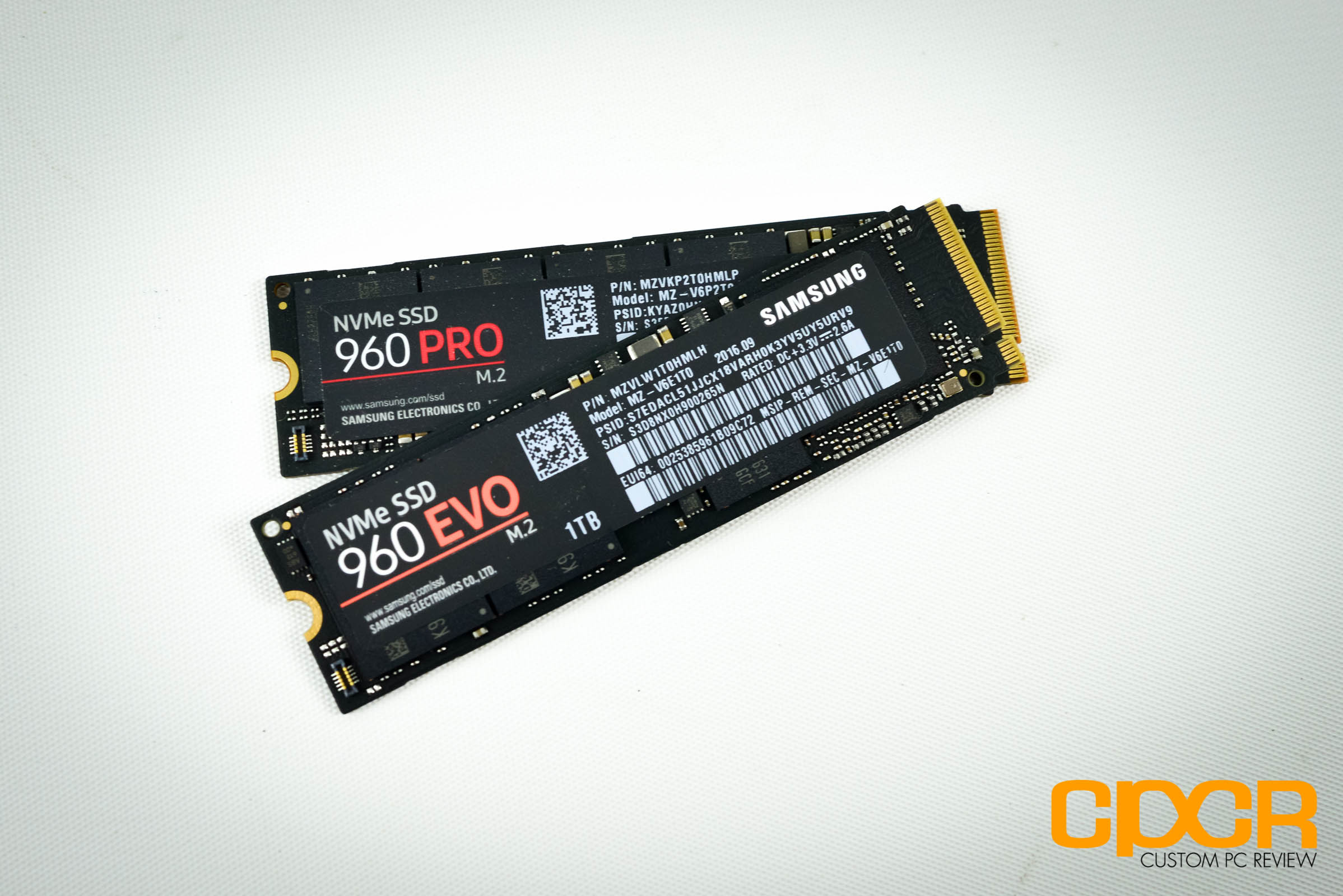[section label=1. Introduction]
Micron’s M500 for DataCenters
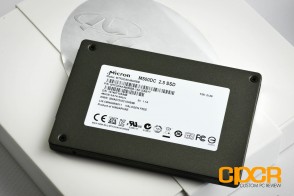 A little over a year ago when Micron/Crucial introduced the M500, it was the first time any SSD manufacturer was able to offer a SATA SSD with a capacity of 1TB at a reasonable cost. The trick to this was the use of Micron’s newest 20nm L85 128Gb NAND flash, which allowed Micron to cram up to 128GB into a single NAND package. By cramming double the data capacity into the same amount of silicon, Crucial/Micron was able to sell the M500 at a mere $0.50/GB-$0.65/GB – something that was only dreamed of in years past.
A little over a year ago when Micron/Crucial introduced the M500, it was the first time any SSD manufacturer was able to offer a SATA SSD with a capacity of 1TB at a reasonable cost. The trick to this was the use of Micron’s newest 20nm L85 128Gb NAND flash, which allowed Micron to cram up to 128GB into a single NAND package. By cramming double the data capacity into the same amount of silicon, Crucial/Micron was able to sell the M500 at a mere $0.50/GB-$0.65/GB – something that was only dreamed of in years past.
Despite pricing on consumer grade SSDs reaching new lows, pricing on enterprise SSDs haven’t really changed all that much. Unlike consumer SSDs, where new models are introduced to constantly take advantage of newer, cheaper, lower endurance NAND on finer lithographies, enterprise SSDs have always championed high endurance and data security above all else, which is nice, but really isn’t really the top priority for hyperscale datacenters with plenty of redundancy and mostly read intensive applications. For these ever growing datacenter deployments where access to fast, cheap, and reliable storage is the highest priority, Micron recently introduced the M500DC in hopes that it would fill the gap between cheap consumer SSDs and high end enterprise SSDs.
Today we’ll be reviewing the Micron M500DC, which as its name suggests, is Micron’s latest entry level enterprise SSD based off the M500 platform. Both drives will share similar hardware such as the controller and the NAND, but the M500DC being an enterprise grade SSD will also feature consistent performance, higher endurance, end to end data path protection, power loss protection, and more. Unlike the M500 which is mainly read optimized, the M500DC bolsters this capability with fast and consistent write performance as well making it far better suited for datacenter environments.
Micron M500DC Specifications
| Manufacturer | Micron | Micron | Micron | Micron |
|---|---|---|---|---|
| Model | M500DC | M500DC | M500DC | M500DC |
| Form Factor | 1.8″ 5mm, 2.5″ 7mm SATA | 1.8″ 5mm, 2.5″ 7mm SATA | 1.8″ 5mm, 2.5″ 7mm SATA | 1.8″ 5mm, 2.5″ 7mm SATA |
| Capacity | 120 GB | 240 GB | 480 GB | 800 GB |
| Controller | Marvell 88SS9187 | Marvell 88SS9187 | Marvell 88SS9187 | Marvell 88SS9187 |
| NAND | 20nm Micron 20nm Synchronous NAND | 20nm Micron 20nm Synchronous NAND | 20nm Micron 20nm Synchronous NAND | 20nm Micron 20nm Synchronous NAND |
| Sequential Reads | 425 MB/s | 425 MB/s | 425 MB/s | 425 MB/s |
| Sequential Writes | 200 MB/s | 330 MB/s | 375 MB/s | 375 MB/s |
| 4K Random Read | 63,000 IOPS | 63,000 IOPS | 63,000 IOPS | 65,000 IOPS |
| 4K Random Write | 23,000 IOPS | 33,000 IOPS | 35,000 IOPS | 24,000 IOPS |
| Interface | SATA 6GB/s | SATA 6GB/s | SATA 6GB/s | SATA 6GB/s |
| Warranty | 5 Years, 0.5PB Total Bytes Written | 5 Years, 1.0PB Total Bytes Written | 5 Years, 1.9PB Total Bytes Written | 5 Years, 1.9PB Total Bytes Written |
Micron will offer the M500DC in four models ranging from 120GB up to 800GB and in both 1.8″ 5mm and 2.5″ 7mm form factors. This will allow the M500DC to be compatible with most servers on the market including some of the more compact MicroBlade and embedded solutions.
In order to use cMLC NAND in enterprise grade hardware, the 120GB, 240GB, and 480GB models will feature no less than ~62% overprovisioning while the 800GB model will feature ~28%. By substantially overprovisioning the M500DC, Micron is able to give the M500DC far better write consistency and endurance in comparison to typical consumer grade SSDs.
The Micron M500DC features a 5 year, variable TBW (Total Bytes Written) warranty based on capacity. The 120GB M500DC for example carries a 5 year, 0.5PB TBW warranty while the 480GB M500DC carries a 5 year, 1.9PB TBW warranty. Generally speaking, the TBW doubles from 120GB to 240GB to 480GB; however, at 800GB, the TBW rating is the same as the 480GB capacity as it features only 28% OP as opposed to the 62% OP on the smaller capacities.
Additionally, the Micron M500DC also includes Micron’s XPERT (eXtended Performance and Enhanced Reliability Technology) feature-set which includes a combination of datapath protection, power-loss protection and adaptive read management. This helps the M500DC greatly improve performance and reliability over consumer grade hardware. Those interested in a more in-depth technical discussion on XPERT can find it here.
[section label=2. A Closer Look]
A Closer Look at the Micron M500DC 480GB
The packaging for the Micron M500DC is pretty non-descript. We simply get a Micron box with few details of what’s inside.
Opening up the package, we get the Micron M500DC 480GB. The top of the SSD features a simple label with some basic specs while the bottom is pretty much empty. The entire casing is constructed of metal which acts as a heatsink for the components inside.
Opening up the casing, it’s a bit surprising how few components are actually onboard.
At the center of the Micron M500DC is the tried and true Marvell 88SS9187-BLD2 controller, which is the same 8-channel controller used on the Micron/Crucial M500.
NAND onboard the M500DC consists of six modules of 128GB (1Tb) Micron 20nm Synchronous MLC NAND (FBGA #NW388) giving us a total of 768GB of raw NAND capacity. As this is an enterprise SSD using consumer grade NAND, Micron is reserving ~62% of that for overprovisioning and RAIN (Redundant Array of Independent NAND) leaving us 480GB of user addressable space.
One of the biggest features in both the Micron/Crucial M500 and the Micron M500DC is RAIN, or Redundant Array of Independent NAND Elements). RAIN is Micron’s NAND management technology which basically functions similarly to a RAID 5 array. By using a portion of NAND for parity, Micron is able to significantly reduce the chance of data loss beyond what’s recoverable using ECC technology. With the M500DC 120GB, 240GB, and 480GB Micron is using an 11:1 stripe ratio whereas the M500DC 800GB is using a 15:1 stripe ratio, similar to that used on M500.
Those interested in learning more about RAIN can check out Micron’s technical brief on RAIN here.
Onboard we also get two Micron DDR3-800 512MB DRAM buffer chips (FBGA Code: D9QLJ) totaling 1GB of DRAM cache.
As a part of Micron’s XPERT feature-set, the M500DC also includes an array of tantalum capacitors to protect both data at rest and data at flight in the event of sudden power loss. While the consumer grade M500 already includes capacitors to protect data at rest against sudden power loss, the capacitors in the M500 aren’t designed to also protect data in flight.
[section label=3. Test Setup/Drive Information]
Haswell Test Bench
| System | CyberPowerPC Gamer Xtreme 4200 |
|---|---|
| CPU | Intel Core i7 4770K |
| Motherboard | ASUS Z87-A |
| Memory | Kingston HyperX Genesis 16GB DDR3 2133MHz |
| Graphics | Intel HD4600 Graphics |
| Storage | OCZ Vertex 4 256GB |
| Power Supply | Corsair HX650 |
| Case | HSPC High Speed Tech Station |
| Optical Drive | ASUS OEM DVD Drive |
| Operating System | Windows 8 64 bit & CentOS 6.4 |
Special thanks to CyberPowerPC, Kingston, OCZ Technology and HSPC for sponsoring our test bench!
Crystal Disk Info
Micron M500DC 480GB
Today we’ll be reviewing the Micron M500DC 480GB with firmware 0129. Here’s a look at our Crystal Disk Info report. The drive supports all the latest technologies such as S.M.A.R.T., APM, NCQ, and TRIM. Our drive doesn’t support TCG Opal 2.0/eDrive however, Micron is capable of producing drives with encryption support for those who request it.
[section label=4. 4K Random Read/Write Performance]
Micron M500DC 480GB Performance
4K Random Write Preconditioning
Before our 4K Random Read/Write performance testing, we’ll first precondition our enterprise SSD by secure erasing the drive then hammering it with a little over 10,000 seconds worth of 4K random writes at QD32. By recording the IOPS and latency every second during our run, it’s easy to see what kind of write performance can be expected as our SSD transitions from its fresh out of the box state into steady state.
4K Random Read/Write Performance
After our 4K random write preconditioning, we then run two more passes of 4K random data through the enterprise SSD for consistency before conducting our actual testing below.
Performance Analysis
Micron rates the M500DC at 63,000 IOPS random 4K reads and 35,000 IOPS random 4K writes, and in testing the drive had no problem pulling over 91,000 IOPS random 4K reads and 43,000 IOPS random 4K writes. With a mixed 70/30 read/write workload, the M500DC was able to pull 41,000 IOPS, which is very good for an entry level enterprise SSD running off cMLC.
What’s truly impressive however, is drive latency. During initial preconditioning, latency on the Micron M500DC never exceeded 4ms despite being continuously battered with 4K random writes.
[section label=5. 8K Random Read/Write Performance]
Micron M500DC 480GB Performance
8K Random Write Preconditioning
Before our 8K Random Read/Write performance testing, we’ll first precondition our enterprise SSD by secure erasing the drive then hammering it with a little over 10,000 seconds worth of 8K random writes at QD32. By recording the IOPS and latency every second during our run, it’s easy to see what kind of write performance can be expected as our enterprise SSD transitions from fresh out of the box into steady state.
8K Random Read/Write Performance
After our 8K random write preconditioning, we then run two more passes of 4K random data through the enterprise SSD for consistency before conducting our actual testing below.
Performance Analysis
Transitioning to 8K random read/writes, the M500DC appears to lose a significant amount of random read performance as it was only capable of pulling ~46,000 IOPS. Random write performance however, is still fairly solid with steady state write performance at ~23,000 IOPS.
What’s more important however, is random write latency which never exceeded 7ms. This will result in a very smooth and consistent user experience.
[section label=6. 128K Random Read/Write Performance]
Micron M500DC 480GB Performance
128K Random Write Preconditioning
Before our 128K Random Read/Write performance testing, we’ll first precondition our enterprise SSD by secure erasing the drive then hammering it with a little over 10,000 seconds worth of 128K random writes at QD32. By recording the IOPS and latency every second during our run, it’s easy to see what kind of write performance can be expected as our enterprise SSD transitions from its fresh out of the box state into steady state.
128K Random Read/Write Performance
After our 8K random write preconditioning, we then run a two more passes of 4K random data through the enterprise SSD for consistency before conducting our actual testing below.
Performance Analysis
Moving into large block transfers, performance is once again strong, but not groundbreaking. In testing we were able to pull ~354MB/s random reads and ~205MB/s random writes with the drive in steady state. That said, like our previous testing with 4K and 8K data, the M500DC showed very consistent performance throughout which should lead to a very consistent user experience.
[section label=7. Server Access Patterns]
Micron M500DC 480GB Performance
Server Access Patterns
While synthetic workloads are great indicators of a SSD’s performance, it’s not always indicative of how a SSD is actually going to be used in the real world. Very few applications for example will run continuous passes of 4K data at QD256. This is why we also run testing using typical access patterns users would face in the real world.
Testing here is conducted after a secure erase is performed followed by two full passes of 128K data followed by two full passes of 4K random data.
Web Server Access Pattern
Our web server access pattern simulates the type of activity found in a typical web server. The access pattern is made up of 100% reads with blocksizes ranging from 512b up to a maximum of 512K.
Access Pattern: 100% Read / 512b=22%, 1K=15%, 2K=8%, 4K=23%, 8K=15%, 16K=2%, 32K=6%, 64K=7%, 128K=1%, 512K=1%
OLTP/Database Access Pattern
Our OLTP/Database access pattern simulates typical online transactional processing and database workloads. The access pattern here is made up to 67% reads and 33% writes at the 8K blocksize.
Access Pattern: 67% reads, 33% writes / 8K=100%
File Server Access Pattern
Our file server access pattern simulates a typical fileserver. The access pattern here is made up of 80% reads and 20% writes with blocksizes ranging between 512b to 64K.
Access Pattern: 80% reads, 20% writes / 512b=10%, 1K=5%, 2K=5%, 4K=60%, 8K=2%, 16K=4%, 32K=4%, 64K=10%
Performance Analysis
Looking at our server profiles here, we can see that the Micron M500DC is able to offer very balanced, predictable performance in all environments. That said, performance slightly trails the Seagate 600 Pro in some applications due to the M500DC’s lower random read performance at larger blocksizes.
[section label=8. Power Consumption]
Micron M500DC 480GB Power Consumption
For our power consumption testing today, we’ll be conducting a trace on power draw during our 4K, 8K and 128K preconditioning runs. All power testing below is measured by tapping our calibrated B&K Precision 5491B Bench Multimeter directly into the 5v line running from the power supply to the drive.
Performance Analysis
In our testing, power consumption on the M500DC ranged from ~1.26w at active idle to ~5.7w at load (128K random writes). It’s not much better than even some 10,000RPM hard drives out there; however, it’s important to keep in mind that the M500DC is capable of significantly higher performance per watt, which will be especially apparent when dealing with small block transfers.
[section label=9. Conclusion]
Micron M500DC 480GB Conclusions
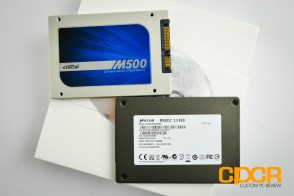 Unlike typical client applications which are generally low queue depth and read intensive, enterprise applications cover everything from read heavy to write heavy, from small blocksize to large blocksize, from low queue depth to high queue depth, and everything inbetween. Because of this, there’s a significant chunk of the enterprise market that simply aren’t interested in paying $2.00+/GB for SSDs with ratings 10+ Petabyte ratings, but still see the value in an enterprise grade drive with enterprise grade features. This is where the M500DC fits into the Micron product portfolio.
Unlike typical client applications which are generally low queue depth and read intensive, enterprise applications cover everything from read heavy to write heavy, from small blocksize to large blocksize, from low queue depth to high queue depth, and everything inbetween. Because of this, there’s a significant chunk of the enterprise market that simply aren’t interested in paying $2.00+/GB for SSDs with ratings 10+ Petabyte ratings, but still see the value in an enterprise grade drive with enterprise grade features. This is where the M500DC fits into the Micron product portfolio.
Performance on the Micron M500DC 480GB was quite good and in certain scenarios exceeded expectations – especially in 4K random read/writes and latency. With the M500DC capable of pulling 91,000/43,000 IOPS random 4K read/write in steady state, you’re practically looking at the performance of a top tier enterprise SATA SSD despite the fact that the M500DC is technically geared towards the entry level. What’s more impressive however, is the M500DC’s ability to keep latencies low despite being constantly hammered with data. In our trace testing with 4K and 8K data, the M500DC was able to keep maximum latencies under 4ms and 7ms respectively, which is far below the 50ms threshold for smooth and consistent performance.
| Manufacturer | Micron | Micron | Micron | Micron |
|---|---|---|---|---|
| Model | M500DC | M500DC | M500DC | M500DC |
| Capacity | 120 GB | 240 GB | 480 GB | 800 GB |
| Street Price | $191.99 | $323.99 | $579.99 | $909.99 |
| Price/GB | $1.60 | $1.35 | $1.21 | $1.14 |
| Check Pricing | Click Here | Click Here | Click Here | Click Here |
Pricing on the Micron M500DC 480GB is currently $579.99, which translates to ~$1.21/GB making it very competitive compared to Intel’s DC S3500 at ~$1.28/GB, Intel’s DC3700 at ~$2.44/GB, and even Micron’s own P400m at ~$2.49/GB. However, it’s important to remember that these enterprise drives are usually purchased in volume, so I’m sure volume discounts will apply for the vast majority of M500DC drives sold.
My only minor complaint with the M500DC is large blocksize read performance. Whereas the M500DC does exceptionally well in 4K random reads, performance takes a bit of a dive with larger 8K and 128K blocksizes which really shouldn’t be the case for a drive like this. That said, mixed workload performance was still quite good, which offset the random read performance hit.
Overall the Micron M500DC is a great performing, all around drive that finally gives Micron a solution that bridges the gap between consumer and traditional enterprise grade hardware. With the hyperscale datacenter becoming a rapidly growing market, the M500DC is in the perfect position to meet the needs of datacenters who require enterprise grade reliability, consistency and power loss protection, but aren’t looking to pay traditional enterprise grade prices.
Sample provided by: Micron
Available at: CDW

